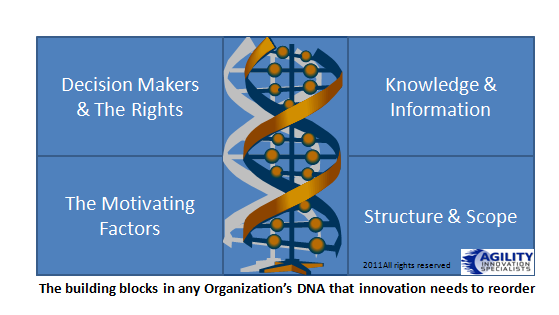This past week we had a #innochat tweet session(www.innochat.com) around Jeffrey Phillip’s book “Relentless Innovation”( http://amzn.to/xXoHof ).
The chat was framed around a set of questions here (http://bit.ly/Awvh5E ) but basically the premise of Jeffrey’s thinking was “can it be possible to shift from business as usual (BAU) to innovation business as usual”?
He suggests that one of the most significant challenges for innovation is the fact that many firms have spent years, if not decades, creating business models and operating processes that are exceptionally efficient and effective but neglect the essential part that innovation plays.
Equally the middle manager is so focused on the delivery of short term results through effective organization and pursuing efficiencies they have little ‘slack’ within the system to learn and build innovation into it.
I would possibly argue the very people that we are expecting to manage the ‘dynamics’ within organizations, the Middle Managers, are seeking the very opposite- doing everything possible to keep it as stable and consistent as it can be.
So how can this change?
